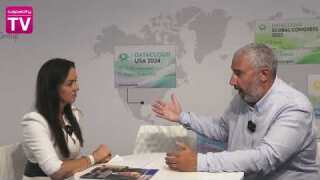
Despite big advances in connectivity in Africa in the past decade, the region remains in much need of further access and capacity. Prenesh Padayachee, group chief digital officer at SEACOM, explains how the carrier's experience in Africa and debut on the Equiano subsea cable make it perfectly placed to achieve this growth.
In the past decade and a half since going live in Africa in 2009, SEACOM has seen a huge amount of change in the region. That year, the Mauritius-headquartered carrier launched the continent’s first independent broadband submarine cable along its eastern and southern coasts, connecting Africa to Asia and Europe.
Since then, multiple subsea cables have sprung up in the region and the company has added capacity on the west coast – including going live on the West Africa Cable System and other cables, giving it a redundant ring around the continent. It has complemented all that with upgrades in terrestrial capacity, including a region-wide IP-MPLS network and metro fibre in major African cities.
All that has allowed the company to “seamlessly” move traffic from coast to coast, cut prices and bring capacity to areas that previously relied on satellites for connectivity, says Prenesh Padayachee, group chief digital officer at SEACOM.
“We totally changed the dynamic, with lower price points being one of the benefits we brought to the region,” he says. “The development of technology hubs has catapulted since we’ve been there. You’ll notice that lots of over-the-top providers today have clusters in the region and are starting to invest more in technology and software development.”
Connectivity demand
But despite all this growth, there is still a huge requirement for more connectivity in Africa. The region requires 700 additional data centres over the next decade to meet demand and keep the region’s other countries on a par with South Africa, according to a 2001 report by trade organisation the African Data Centres Association and research firm Xalam Analytics.
That creates a big challenge, but also a huge opportunity to underpin this significant growth – and SEACOM believes it is well up to the task. “For us, it’s a case of born in Africa and building for Africa,” says Padayachee. “That means we understand the requirements for the territories in which we operate there. Over the years, we’ve been developing this pan-African strategy of ours to be a truly pan-African operator.”
SEACOM took a big step towards aiding the next phase of growth by going live in March on Google’s recently launched 15,000km Equiano cable, which runs all the way down the continent’s west coast from Portugal to South Africa, and cuts latency between Africa and Europe. The cable, on which SEACOM has acquired a fibre pair with 12Tbps of capacity and enables an express route from Lisbon to Cape Town, has a design capacity of 144Tbps and includes branching points that can be used to roll out connectivity to additional African countries.
The cable is expected to have a major economic impact, while helping cross-border digital trade and providing a big boost to highly latency-dependent services. Padayachee highlights that low latency is crucial in areas such as financial services like live trading, where delays of just milliseconds can make a difference.
Bringing benefits
Padayachee adds that such enhancements are key to helping developments in wider society in Africa. “It’s important for us to contribute to overall uplift for the continent,” he says. “It’s also important for us that we shorten the round-trip time that it takes to get to Europe.”
As one of the first launchers on the Equiano cable and with its wide experience as an Africa-focused player, Padayachee says SEACOM has gained significant knowledge on challenges and opportunities in the region, making it the ideal carrier of choice there. He believes that this latest development will help really advance the region’s digital aspirations, while providing a further platform for growth at SEACOM to spur these aims.
Going forward, a need remains for more capacity in many parts of Africa that still lack access, and SEACOM plans to carry on investing to support this. In doing that, the company is open to conversations about whether it owns or rents infrastructure or works in consortium models – believing that while healthy competition is good for the market, flexibility and collaboration with other market players are also essential to future growth in the region.
Developments like the Equiano cable, combined with advancing infrastructure, have big potential to add to this, says Padayachee. “In the future, I think these developments will drive more content creation on the continent,” he says. “In parallel, I think trans-African cables will develop too, while I don’t think we’ll have to wait long periods of time to get more capacity on the continent.”




